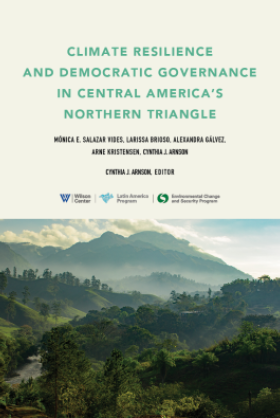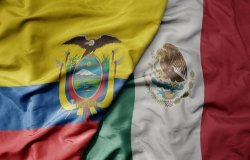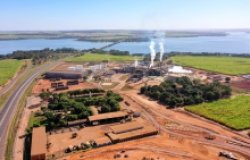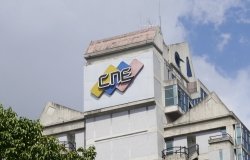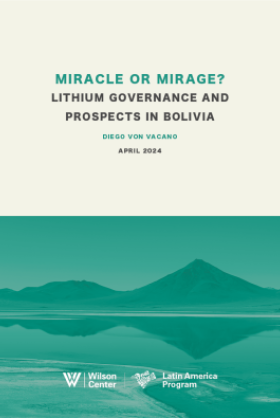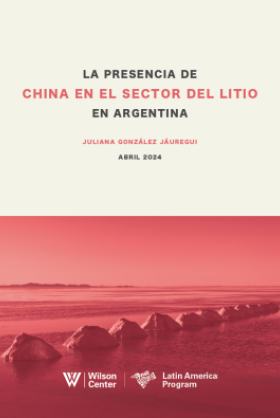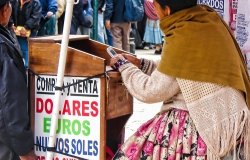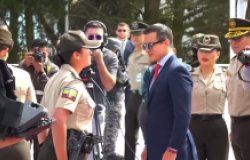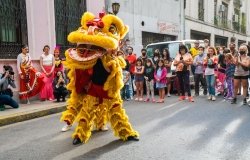The April 9 Presidential Election in Peru
with Carlos Basombrío, Capital Humano y Social, S.A., and Peru 21 and Professor Julio Carrión, University of Delaware
Overview
Carlos Basombrío, Capital Humano y Social, S.A., and Peru 21 and Professor Julio Carrión, University of Delaware
On April 9, 2006, Peru held its second democratic election since former President Alberto Fujimori fled the country in 2000 amidst a burgeoning corruption scandal. Fujimori's attempt to return to Peru, coupled with public opinion polls showing retired military officer Ollanta Humala ahead of center-right candidate Lourdes Flores and former President Alan García, made these elections a pivotal event in the changing political landscape of the Andean region and of Latin America as a whole.
Carlos Basombrío of Capital Humano y Social, S.A. situated the Peruvian presidential election within three broad contexts. First, he said, the nation's economy had grown over the last five years, largely driven by an increase in exports and commodity prices. However, growth has had little impact on poverty reduction, and had even accentuated the gap between those regions experiencing growth and those that had not. Second, distrust in politicians and in the institutions of democracy is deeply engrained among the electorate, leading voters to look for a political outsider running against the system. Finally, following the incomplete military defeat of Sendero Luminoso in the early 1990s, there was no serious effort to address the consequences of the war or its socio-economic roots. Today's political parties jockeyed to lay claim to the votes of those who had supported former president Alberto Fujimori, jailed in Chile in an attempt to return to Peru. Thus, rather than repudiate fujimorismo and the corruption and authoritarianism it had represented, candidates were vying for the fujimorista vote.
Basombrío indicated that there was almost a perfect correlation between the regions and social sectors that had supported Fujimori and those now backing Ollanta Humala. Humala, who was relatively unknown only six months ago, is a retired lieutenant colonel who comes from a long line of military officers. Over time, his family developed an ideology known as etnocacerismo, an ethno-nationalist movement which embraces Incan heritage and is named after the 19th century Peruvian president and war hero Andrés Avelino Cáceres, who led the resistance against Chilean occupation. Basombrío described the movement as resonating with a combination of xenophobia, racial superiority, militarism, ultra-nationalism, violence, and utterly archaic economic planning (including, for example, a proposal to do away with money). Since late 2005, Humala has made efforts to distance himself from the more controversial positions of other family members (including a proposal to kill homosexuals), espousing a version of Etnocacerismo "light." Basombrío also noted that Humala has been credibly accused of carrying out torture, murder, and disappearances during military operations against the Shining Path.
In the days immediately prior to the elections, Humala led in the polls, with center-right candidate Lourdes Flores and former president Alan García battling for second place. A run-off is inevitable and Basombrío emphasized that Peru's future remains uncertain, even if Humala is finally defeated, due to political unrest and structural problems. Basombrío asserted that the new administration must concentrate its efforts on reducing poverty, reforming the political system, and ending violence by Sendero Luminoso.
According to Julio Carrión, professor of political science at the University of Delaware, Peru's campaign for the presidency has not been a national race, but rather a collection of regional races revealing deep cleavages based on wealth and race. While Flores is leading in Lima, where 38 percent of the electorate resides, Humala was polling moderately well in the capital and also led the polls in virtually all of Peru's rural areas. Carrión underscored the volatility of public opinion as measured in major polls, noting that in April 2005 Ollanta enjoyed only 5 percent support. Support for Flores, originally the front-runner, had declined while support for former president García had slowly risen. According to Carrión, polling data also revealed clear polarization along class lines, with the middle class constituting a large portion of swing voters. He pointed to a correlation between the waning popularity of former interim president Valentín Paniagua and the rise in support for Humala, who also benefited from Flores' waning numbers.
Carrión emphasized that questions of motivation constituted a major difference between supporters of Flores and García and those of Humala. Voters overwhelmingly preferred the actual proposals made by Flores or García, but Humala had double the support of the other two when it came to questions about the candidate's vision for Peru. Voters connect with Humala at a symbolic level, Carrión concluded, something related to his role as outsider.
The April 9, 2006, election resulted in a run-off between Ollanta Humala and second-place winner Alan García. The run-off was scheduled for May 28, 2006.
Hosted By

Latin America Program
The Wilson Center’s prestigious Latin America Program provides non-partisan expertise to a broad community of decision makers in the United States and Latin America on critical policy issues facing the Hemisphere. The Program provides insightful and actionable research for policymakers, private sector leaders, journalists, and public intellectuals in the United States and Latin America. To bridge the gap between scholarship and policy action, it fosters new inquiry, sponsors high-level public and private meetings among multiple stakeholders, and explores policy options to improve outcomes for citizens throughout the Americas. Drawing on the Wilson Center’s strength as the nation’s key non-partisan policy forum, the Program serves as a trusted source of analysis and a vital point of contact between the worlds of scholarship and action. Read more
Thank you for your interest in this event. Please send any feedback or questions to our Events staff.
